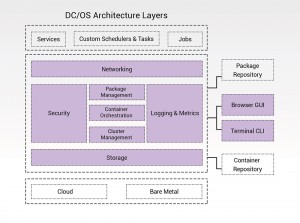Top Trends Shaping IT Cloud Strategies

Cloud computing has helped many organizations to transmute their IT practices over the past few years, but whizzes agree that the market is ingoing a second wave for public, private and hybrid cloud services.
Predictions from major consultancy firms mentioned the fact that for the coming years, the rate of adoption is sustainable, and cloud computing will see more investment from IT giants, and more adoption from businesses.
In parallel, market experts, along with shareholders from the IT industry and enterprises across the globe, are in agreement that there is an irrefutable wave of transformation and progress taking shape. This metaphorical wave is best understood as the sum total of distinct trends in cloud computing that are shaping the industry. Let us understand these trends better, which can help you to get better idea on your IT cloud strategies.
IT CLOUD STRATEGIES
HYPER CONVERGENCE IN THE PRIVATE CLOUD
It is grabbing our attention, how a plenitude of enterprises has preferred the cloud because of lack of trust in the security of their own on-premises technologies, and after the transition, have to deal with the truth that business data rests with a third-party vendor in the public cloud services domain.
Hyper convergence in private cloud appears as a solution. Now, private cloud also needs normalization, automation, resource monitoring, self-service, and virtualization, same as the public cloud. Dealing with all these capabilities and binding them into a coherent unit is hard for businesses, hyper convergence appears as an IT cloud strategies option.
COST CONTROL
The truth is, the payments for cloud investments have been long delayed for many enterprises. The cloud services purely based on cost, it helps to develop insight on regulating cloud costs.
For beginners, complex pricing plans and contracts are responsible for making businesses waterlogged so they are having trouble venturing into cost analyses. For example, Amazon and Google offer cloud services that charge businesses on the basis of number of messages generated per hour, or number of messages sent in a day. Then, there are several plans for each service customer wish to purchase.
CONTAINERS ARE HERE TO STAY
Almost all major cloud service providers support container development. Containers help the developers to migrate software code effortlessly. OpenShift and CloudFoundry can be functioned easily on Azure, AWS, and Google Cloud. Containers help enterprises with portability between cloud services from Azure, Google Cloud, and AWS, or among others.
This is because they can use containers to realize their DevOps strategies to allow faster software production. The new paradigm brings new challenges around security, monitoring, networking, and storage issues. However, in spite of these challenges, containers have established their worth by helping enterprises to leverage portability
CLOUD APPS MIGRATION
Some organizations are also looking for a refactor apps to run on public cloud systems, leveraging migration services, rather than simply removing existing apps in a public cloud. The ideal option of moving an application is by rewriting it to take advantage of cloud’s elasticity, although cloud apps migration can be expensive.
THE VERDICT
Cloud services have grown stronger, and are all set to transmute even more businesses, in more number of ways, than before. These trends will help CIOs and other IT decision makers to align their business cloud strategies to the realities shaping the market.



